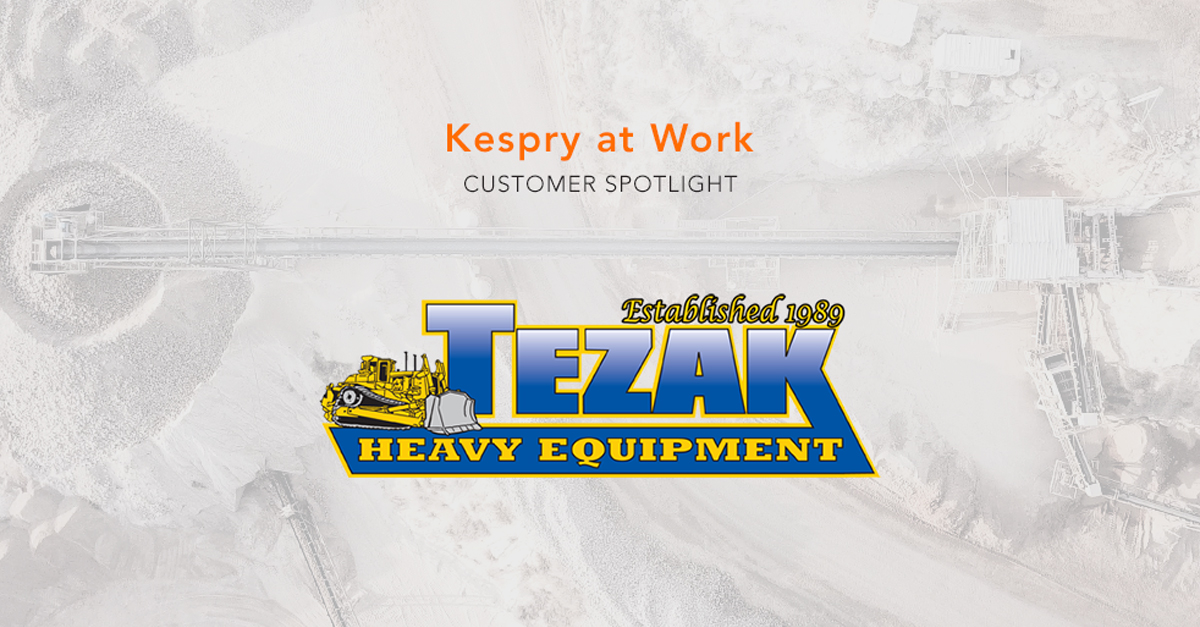Tezak Heavy Equipment is a family business, established in 1989, serving Southern Colorado. The company specializes in civil construction, including roadways, bridges, dams, and river restoration projects.
Kyndra Tezak is the Drone Pilot and Quantity Takeoff Estimator at Tezak, responsible for reporting inventory each month. Kyndra uses the Kespry 2s system throughout all stages of Tezak’s business processes. Her drone flight data collection adds value from the very beginning of new projects by applying Kespry to the pre-bid phase, as well as the start of a project with an accurate survey. She uses Kespry to manage inventory to ensure Tezak has sufficient material available at the quarries for their external customers, as well as their own internal project sites. Kyndra then uses the Kespry Cloud to show Tezak customers’ frequent updated views to track project progress, providing transparency and excellent customer service, and making a significant positive impact on the business. Kyndra’s work enables collaboration within departments, roles, and site locations at the company, and customers.
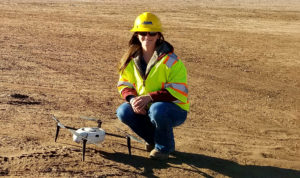
We recently had an opportunity to talk with Kyndra about her work at Tezak with Kespry.
Kyndra: We have a long-term personal relationship with our local John Deere dealership, 4Rivers Equipment. A big factor in choosing the Kespry system was knowing that the 4Rivers team is in our backyard to assist us as we’re learning and seeing what we can do with the system. We’re new to this technology and we wanted to have local support if we needed it. We evaluated other solutions and chose Kespry because we are able to fly multiple quarries and job sites, collect accurate stockpile and site data in a timely manner through pre-planned autonomous flights, while having cloud access for multiple users including other employees or even project owners. The ease of navigating tools provided in the cloud, and the ability to tie our flights to real world site coordinates adds to the value of the product. Kespry’s customer support and care team also provides training on all of their equipment, shares real-time notifications and training on new features in their system, and are responsive with any questions or concerns that arise. It’s good to know that we have their support as we learn and grow with the ever-changing technology in our industry.
What was Tezak’s original goal in getting a drone solution?
Kyndra: Tezak owns two local aggregate quarries, but also keeps inventory for three of our sister quarries within the area. So the primary purpose of getting the Kespry system was to do inventory reports and stockpile management with drone technology, which lessened the burden on our survey department. The safety of our people was another significant consideration due to the fact that the collection of GPS data required that our people scale the stockpiles to get an accurate topo map of the piles. With the Kespry system, we do not have to expose our employees to these potential risks.
Tracking material is critical to us internally, because our aggregate quarries are another competitive advantage for us. We generally track our aggregate production through the use of belt scales on our processing plants but these can vary and do not provide for the level of accuracy that we’re looking for, especially when using this information for financial statement purposes. The Kespry system gives our team a ‘checks and balance’ perspective and a reassurance that the stockpiled material quantities are accurate, both in the quarries and on project sites.
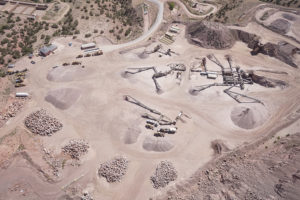
How did you do that work before and how often were you measuring inventory?
Kyndra: Before we got Kespry, our surveyor would topo our aggregate quarries quarterly by hand. We would only be able to measure inventory four times a year. He would be out there at the end of each quarter, climbing the piles, taking inventory of everything we had on site. It was a very slow process. It would take him at least two or three days to measure, and then more time to process all of that data, so inventory would typically be a two-to-three week process.
How is your inventory process better now that you are using Kespry?
Kyndra: Now, with Kespry, we fly each quarry and project site twice per month. It used to take two to three weeks just to measure inventory, but with Kespry, I can measure all of our aggregate sites in two to three days and I’m able to fly our project sites as well. It’s a huge difference. Our surveyors can now be more productive, spending time doing GPS modeling for our equipment that works in our construction division, as opposed to spending time in the quarries doing inventory.
How long does it take you to fly your sites and get results?
Kyndra: Our smaller aggregate quarry in Penrose, typically takes me 45 minutes to an hour onsite to set up, calibrate the drone, send the mission, let the drone fly, land, and upload all flight data to the iPad. Our primary hard rock aggregate quarry has a high wall over 450 feet tall, so I split that flight plan into two separate missions. That mission typically takes me two-and-a-half hours to capture both flights from start to finish and upload the mission to the iPad.
Once I’m in the office, it takes about 10 to 15 minutes to upload to the cloud, and then I can go right into the Kespry cloud and enter in my GPS reference data. It’s extremely fast compared to what we were doing before. With Kespry, I can get all of the data I need from the flights for every site that we have in one to two days total.
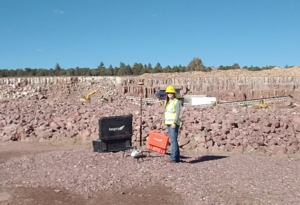
How does Kespry help you manage inventory for Tezak?
Kyndra: I have found that it helps us tremendously in working with all of the aggregate products, to keep an accurate inventory in the quarry and to confirm that we have material for specific projects or customers. Our superintendents, project managers and, especially our estimators, have the resources to check quarry inventory reports before we even bid the work or sell the product from the quarry floor.
Who else at Tezak uses Kespry Cloud data?
Kyndra: The information is shared with the relevant departments and reaches anywhere from five-to-15 people each flight. I am able to send reports and photos as I see fit, and the other individuals on our team also have access to the cloud whenever they need it. We have estimators, a quarry manager, an aggregate sales rep, superintendents, project managers, and project engineers who can get access to their projects.
How does sharing information on the Kespry Cloud make Tezak more efficient?
Kyndra: Kespry makes our team more efficient all the way around. I fly every quarry and project site every two weeks. I will send out information after I upload all of my data and process the flight, and the users don’t have to wait on me for anything. They can go into the Kespry Cloud and get the answers they need. I send out reports to certain departments to make sure everybody is getting the information that they need, but they have access to go in and get information on their own time as well.
Since you started using Kespry for inventory, have you found additional uses for it?
Kyndra: Yes. As we became more familiar with the system, we started implementing Kespry on job sites as well. We’ve been able to implement the Kespry system onsite even more than we had originally planned, which is great. We typically have around four or five active projects at a time, and we’re able to use it on every project site. We’re able to fly the site, tie in the site coordinates with the GPS system in Kespry, export our Kespry drone flight from the Cloud into AGTEK, and overlay our actual data over the design plans from the project owners. We’re now able to compare actual topographical data to owner-supplied data, which allows for real-time comparison of surfaces.
In applying Kespry to your construction projects, what can you do now that you couldn’t do before?
Kyndra: It’s unbelievable. We’re able to give our customers, the project owners, access to their projects in the Kespry Cloud to see their project firsthand anytime. We also have the ability to print out the reports and the cut-and-fill map to show progress. Providing project owners with the photography from the drone is allowing the project owner to see that we are building the project to plan. Customers like to have the visual of their project progress, and they know that we are billing accurately. We now use the technology from the very start of all of our projects. It’s eye opening to our customers that we can provide accurate as-built drawings off of these flights. We’re able to add the end of the month flights in with our monthly billings to show our customers what we did during the month and how we are billing for projects.
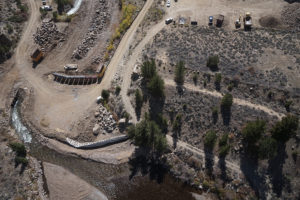
How would you have done this work to track project progress before Kespry?
Kyndra: Before Kespry, we would have spent a lot of time and money on surveying. We would always get an original base topo before the project started, and then we would try to topo again, maybe, once a month, depending on what we were doing onsite. And then we would always end with a final topo. The Kespry system means it’s a lot less time-consuming for us to use a drone and we’re able to go survey more often than we could before, and provide a better experience for our customers. With Kespry, we’re flying each of our project sites every other week, so we’re flying every project and every quarry at least twice a month.
How are you using Kespry when you bid a new project?
Kyndra: We typically use Kespry as we are bidding the project. On many projects we actually send in technical or qualification based proposals, as opposed to just providing a ‘hard bid’. Our project proposals typically include a plan for the approach we would use for that project – how we plan to build a project from start to finish. So I compile all of the Kespry information and some examples that we collected from our flights, and I include that letter in our proposals for the project owner. Once project owners see that our firm is utilizing this type of technology for our daily operations they recognize the value that it provides. We believe this type of transparency with project owners has been one of the keys to our success.
How does Kespry differentiate your company from your competitors?
Kyndra: The photography and ongoing visual project updates are something that not a lot of contractors in our area are able to offer, so I would say that it gives us a competitive advantage because it shows that we are willing to go above and beyond to make sure that we’re exceeding the needs of the project. Customers are thoroughly impressed by the technology that our small business is able to use on their projects, and they are very grateful for the reports and data that we can provide.
What first made you interested in construction management?
Kyndra: Tezak is my family’s company, so I was born and raised into it. Our family business has been very successful for almost 30 years, and I’m working to keep our legacy strong. My family worked hard to get where we are today, so that’s something that I take a lot of pride in and want to continue to carry on for years to come.
I started looking into colleges and careers and that’s when I started really getting into the family business and I decided to go to school for construction management and business at CSU Pueblo. Construction is an industry that’s always going to be essential, and it’s evolving with new technology. I’ve been able to try many different job positions in the company, and each time I’ve been able to learn and grow a little bit more. I started by working in the scale house as a clerk and a certified weigh master. I would run the scales and do all of the job billings for the day, reporting all of the rock that was hauled out of the quarries. I then worked as an assistant project manager, which lead me to a project engineer position before I became the drone pilot. There are a lot of opportunities within the company, and I’m discovering what I can do in the business.
Since I’m going to school while I’m working, it’s been a huge benefit for me use the Kespry system since I’m able to be independent and do my drone pilot work on my own schedule without dependencies on surveyors. I love being able to work in the field and directly apply the knowledge that I’m learning in school. I am thankful for the opportunity because it is one that not many students get to have.
Do you have any advice for other women wanting to get into construction?
Kyndra: Having a strong will, confidence, and work ethics will take you anywhere you want to go. I would tell women that we are equally as capable of doing this job as any man. This is all I’ve ever known, and I know that I’m more than capable of doing it, just as any other woman is.

